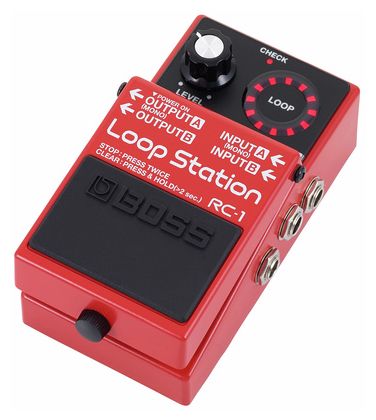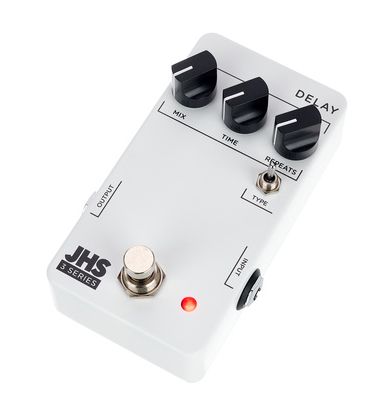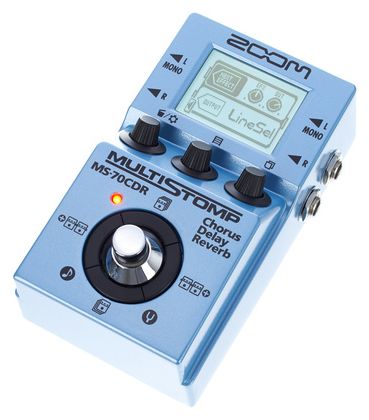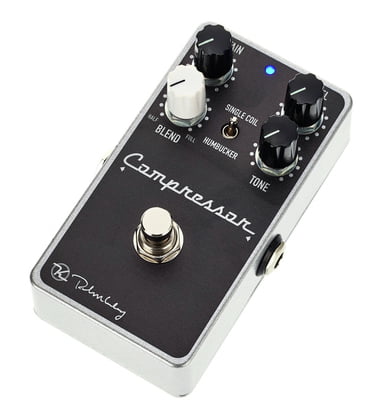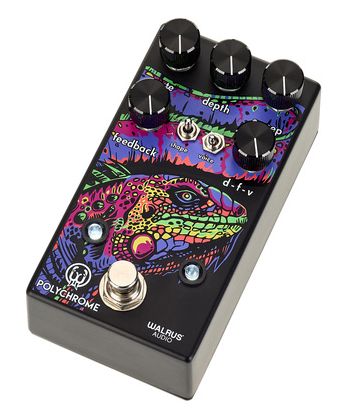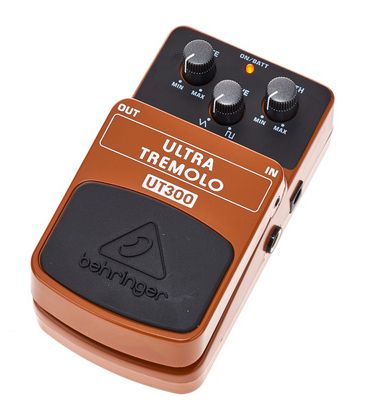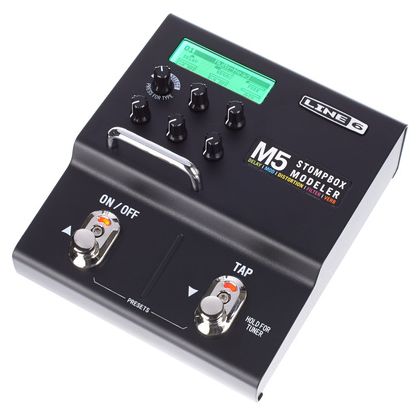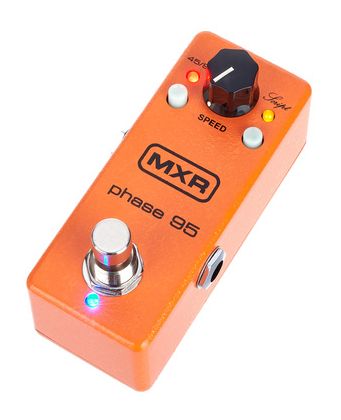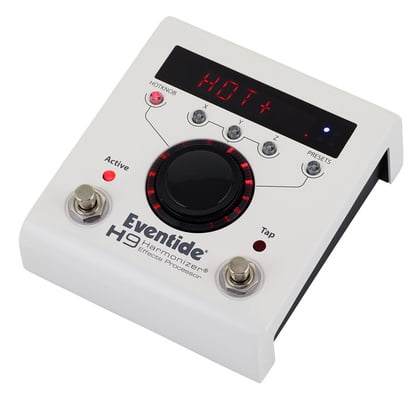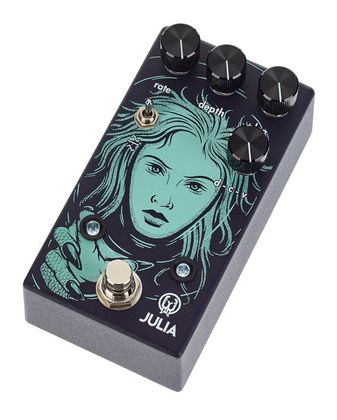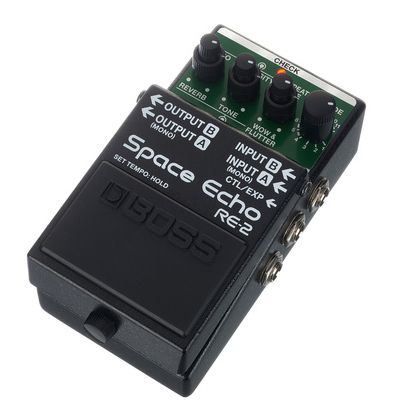This list is about the 10 best Techno, House, DnB, and EDM Music pedals you’ll find in today’s market. This detailed list showcases some of the greatest music pedals ever released by some of the best music companies, such as Boss, JHS, Zoom, MXR, Keeley, Walrus, Behringer, Line 6, and Eventide.
You’ll find that the market is overflowing with guitar pedals. To separate the pedals for Techno, House, DnB, and EDM is already a tough ask that’ll leave you with numerous options, but finding the perfect pedal out of the lot will still feel like trying to find a needle in a haystack.
So many things need to be considered, especially since you can’t afford to base your decision on random guesswork or trial and error. We’ve designed this article to rid you of the confusion. Out of the ever-growing world of guitar pedals, we’ve handpicked the 10 best options for your Music needs so that you can make an informed decision.
We’ve narrowed it all down for you. Now you’ll need to read this article, and by the end of it, you’ll know, with certainty, exactly which pedal is the ultimate pedal for you.
What Makes A Pedal Great For Electronic Music?
Electronic Music has a distinct sound, just like any genre of Music. Some guitar effects pedals go well with the electronic processing involved in this genre. It’s all a matter of finding your own distinct sound, but pedals such as distortions/overdrives, delays, compressors, and flangers sound exceptionally good with electronic Music.
You can even employ some out-of-the-ordinary glitch and stutter pedals to add exciting textures to the overall electronic sound. There are also some decent synth and sequencer pedals that transform the tone of your guitar. Let your creativity run wild as the sky is the limit.
Top 10 Pedals For Techno, House, DnB & EDM Music
1. Boss RC-1 Loop Station
This vibrant guitar pedal is easy to use and could be the perfect loop pedal, especially for beginners.
As the name suggests, a loop pedal aims to loop what’s recorded. This pedal allows you to record and loop and then continuously record to add to the already recorded loop, over and over again, using a single instrument.
The great looper keeps you going and truly inspires creativity. You can use it to record multiple layers with your guitar and form harmonies. Loop pedals are one of the most enjoyable pedals out there, and this one is so easy to use you can unbox, plug and start playing.
Key Features:
- Unboxing and First Impression
This audio device has a guide booklet, a user manual, and the looper pedal. The device, unlike its predecessor, is primarily red in color, with a simple design and boxy form factor with defined edges and corners.
- Look and Feel
The housing is very solid and constructed of metal. The Footswitch is very durable and feels like it’s built to last. The knob, LEDs, and sockets are all very firm too. The unit feels very rugged overall. It measures 6.0″ x 3.85″ x 2.7″ (15.24 cm x 9.78 cm x 6.86 cm) and weighs just under half a kg at 0.44kg (0.97 lbs.).
- Usability
Unwinding the black knob placed at the front side unveils the battery compartment, which houses a replaceable 9V battery. The device can operate for up to four hours on a single battery. Carrying a spare battery can double your playing time and may prove particularly useful for longer playing sessions.
Red LEDs start animating when the pedal is pressed, signaling that the recording mode is turned on. What you play until the pedal press begins playing on a loop. If green LEDs also turn on, the device records more which will then be added to the existing looped Music.
If only green lights are on, the device has entered the ‘only playing mode,’ and anything played in this mode will not be recorded. Double tapping and then holding down the pedal will stop the loop, and a single press and hold will delete the previous layer added to the loop.
Pros:
The device can be powered with a power adaptor (sold separately) or via batteries, encouraging portability. Most cheaper competing loopers must be plugged in, so the RC1 is much more portable.
Cons:
Regarding guitar loop pedals, the device is priced at the higher end of the spectrum, but it justifies the value. The loop pedal only has a single-track option. The power adapter, though not pricy, is sold separately.
2. JHS 3 Series Delay
This pedal has a clean and simple design. It sounds good, performs well, and can compete with higher-end delay pedals.
JHS is a world-renowned brand preferred by many top artists such as Andy Timmons, John Mayer, Paul Gilbert, Madison Cunningham, Mark Stoermer (The Killers), Pat Smear and Chris Shiflett of Foo Fighters, Noel Gallagher, Matt Bellamy (Muse) and Derek Webb.
The device comes equipped with a quarter-inch input jack featured on its right side and a quarter-inch output jack on its left, and it requires 9V DC power and consumes 71mA. Higher voltage may damage the device and void the warranty in the process.
Key Features:
- Unboxing and initial reaction
This pedal comes with a user manual booklet and a gravity pic. The unit measures 4.42″ x 2.38″ x 1.22″ (11.23 cm x 6.05 cm x 3.10 cm) and weighs 0.29kg (0.65 lbs.). The pedal is solid in terms of build quality.
It incorporates a simplistic design with a white paint job. The knobs are firmly in place and operate smoothly. The switch is also sturdy, and the push button feels durable. This pedal stays true to JHS’s three-series design and looks identical.
- Controls
The device comes with three primary control knobs belonging to the 3-series by JHS. The knobs represent Mix, Time, and Repeat. The Mix knob controls the volume of the repeated audio according to the amount of effect you want.
The Time knob adjusts the delay time between 80ms to 800ms, and the Repeat knob caters to the number of delay repeats. Just under the knobs, you’ll also find a Type switch that decides the style of delay. You can turn the switch upwards for a digital delay and turn the switch down for an analog delay.
- Overall Experience
This good-looking delay pedal is very easy to use. It offers an 80 to 800-ms delay and would be a great addition to any guitarist’s pedal board. The JHS product provides an overall simplistic and enjoyable experience with all its features at your fingertips.
Pros:
The delay pedal has a sturdy metallic build which ensures durability. It packs the quality of JHS. The guitar pedal provides great value in terms of ease of use and would be an excellent pedal for beginners especially.
Cons:
Cons: This guitar pedal is on the expensive side of the spectrum regarding basic delay pedals. Several competing products are available for much less, promising a similar value for money.
3. Zoom MS-70CDR
This multi-stomp guitar pedal is powerful and can be a rack-mounted multi-effects device.
The guitar pedal is very compact but comes jam-packed with features and promises high quality. The device is excellent for professionals and beginners, from the sturdy exterior to the user-friendly interface.
With features such as custom guitar designs, a chromatic tuner, and nifty power options, this offering from Zoom brings a lot to the table. The pedal is versatile and may be ideal for electric and bass guitarists.
Key Features:
- Unboxing and first impression
You’ll find the pedal, a couple of AA batteries, an explanation manual, and a warranty card in the box. The design is boxy, and the layout of buttons and knobs adds to the device’s ease of use. The unit measures 5.13″ x 3.05″ x 2.3″ (13.03 cm x 7.75 cm x 5.85 cm) and weighs 350g excluding the batteries.
- Hardware
The guitar pedal comprises a durable plastic exterior. The device has two stereo input jacks that accept signals from active and passive guitars. It also hosts dual line-level output jacks, which allow stereo recording.
The device can be powered by an AC power adapter (sold separately) or for up to 7 hours on a pair of AA batteries. To save power, the unit turns on automatically when the input jack is used and powers off if unused for an extended period.
- Software
The pedal provides 137 diverse options, with various effect types such as flanger, tremolo, phaser, vibrato, delay, harmonizer, reverb, filter, equalizer, dynamics, pitch shifter, auto-pan, and more. The device provides 32-bit floating-point calculations, allowing for studio-quality effects, including dense reverbs and delays.
The unit also allows for depth and spaciousness to be added very easily. Creating, changing, and saving effects is very simple too. Up to six effects can simultaneously be applied at a time. The effect chain feature allows you to add, remove or replace an effect as per your taste and preferences.
The pedal has enough storage capacity to save 50 combinations of effects. The effects can also be sequenced at your convenience, a particularly handy feature for gigs. The device also hosts features like tap-tempo, auto-save, and a very efficient noise reduction feature, which reduces noise without hindering the instrument’s actual sound.
The chromatic tuner is a great feature, too, as it can help you set your instrument to several standard tuning variations.
Pros:
The device runs up to 7 hours on a pair of AA batteries, which is especially handy for long sessions while ensuring easy portability. This guitar pedal is an all-in-one pedal in terms of the vast array of features and holds great value for money.
Cons:
The chorus tones can’t match analog. Eq/tone settings aren’t enabled for all of the effects. The reverb isn’t as expansive and lacks dimension. Some effects are similar and could’ve been grouped to make it easier to choose from and scroll through.
4. Keeley Compressor Plus
This guitar pedal is an improved version of the industry-changing compression circuit, and that’s saying something.
The musical device packs even more features than its predecessor, making it more appealing and suitable for a wider audience. The device overall brings a lot to the table and more than justifies its value.
In 2001, Robert Keeley founded this company in Oklahoma City. His initial aim was to pursue the amplifiers market. Still, when he found the market too saturated, he targeted the pedal market since his pedals have been considered industry-changing.
Key Features:
- Unboxing the fun
The box contains a user manual, a Keeley electronics sticker, a warning note (California), a warranty card, and the guitar pedal itself. The device measures 6.75″ x 4.25″ x 3.25″ (17.15 cm x 10.8 cm x 8.26 cm) and weighs 265g. The device features a solid box-like build with firm knobs, a durable press-down button, and a sturdy switch.
- Hardware
The face of the device houses three black knobs for Sustain, Level, and Tone and a white knob for Blend. The sustain knob can be used to increase the sustain and regulate compression. Increasing the sustain close to the upper limit will introduce noise. The knob for level controls the gain lost to blend or compression.
You can turn the tone knob towards the right to increase the output’s brightness or rotate it leftward to decrease it. The white blend knob sets the mix of the uncompressed and compressed signal. Turning the knob left moves you closer to half Blend and towards the right to fully blend.
Then you’ll see an Attack/ Release switch which caters to single coils or humbuckers.
- Overall
The pedal feels solid regarding build quality and the features it packs. This machine is easy to use, with four knobs and a switch. If you desire increased control of dynamics and an overall boost during recording or performing, this pedal will be ideal.
You can increase the sustain, fine-tune the tone, and blend the original sound easily, adding a truly enjoyable experience. Regarding tone, pedals take some quality away from the sound as a compromise to the added effect. However, this device only adds to the signal, making the audio richer and more colorful.
Pros:
The guitar pedal is exceptionally easy to use. It provides a great overall experience. The results you can get with this pedal justify its value for money. The noise floor with sustain turned up is minimal, and you’ll only have to deal with the noise when you aren’t playing.
Cons:
This may not be the best pedal to use with high-output humbuckers, as you’ll notice that your pick attack sounds a bit too enhanced even with all the controls turned down. Although a basic phenomenon of compressor pedals, the Keeley Compressor Plus may elevate the noise floor too much.
5. Walrus Audio Polychrome Analog Flanger
This colorful offering looks and sounds terrific. The vibrant pedal provides an entertaining experience and fits great on a pedal board.
The pedal gives clean sounds, some texture, and movement subtly but soothingly. The five knobs work well together, forming a unique combination that makes this flanger pedal versatile.
Ed O’Brien from Radiohead, Joe Bonamassa, and Nels Cline helped establish Walrus Audio. Phil X (Bon Jovi), John Cummings (Mogwai) & Scott Shriner (Weezer) also use effects pedals by Walrus. The pedals bring a lot of variety and versatility to the table.
Key Features:
- Unboxing experience
This analog flanger pedal comes packed in a powder-coated box and a small tin box containing branded guitar pics, a soft microfiber pedal pouch, an instructions manual, a warranty card, and a Walrus audio catalog.
- Look and feel
This pedal is truly great to look at. It’s very colorful and is a welcome addition to the pedal board. The device measures 4.77″ x 2.6″ x 2.3″ (12.12 cm x 6.6 cm x 5.84 cm) and weighs approximately 1 lb (0.44kg).
- Hardware
The pedal comprises five shiny black knobs for rate, depth, sweep, feedback, and d-f-v. The feedback knob allows for more severe intense sound. The dept and rate knobs control how deep or how fast the sound should be flung in. The sweep knob decides the frequency.
The fifth knob for d-f-v allows you to transition from dry, flanger, and vibrato. You’ll also find two switches for shape and voice. The shape control switch offers sinewave, triangle wave, and a random wave generator which is unique to this guitar pedal.
The random LFO waveform generator introduces more unpredictability than the commonly found robotic effects. The voice switch slows for a smooth traditional flanger and a low-end version with more character. Then a click button can be held down for monetary effect.
Two LED light indicators are placed to the right and left of the button.
Pros:
This flanger guitar pedal is perfect in so many ways. It offers all the traditional flanging sounds, which allow you to go over the top. It also provides pitch vibrato, making it a truly versatile pedal.
Cons:
There’s no expression pedal input. The guitar pedal offers mono, not stereo, and features top-loaded ins and out. A slight volume loss may be experienced in some settings.
6. Behringer Ultra Tremolo UT300
This inexpensive guitar pedal is an excellent choice, especially for beginners or those who wish to try tremolo pedals.
The pedal weighs almost three-quarters of a pound at 0.73 lbs. (0.33 kg). and measures 2.125″ x 2.75″ x 4.8″ (5.4 cm x 6.99 cm x 12.19 cm). The pedal features a boxy exterior and incorporates a simple design to provide easy-to-use classic and warm tremolo effects.
The tremolo pedal is versatile in catering to just about any music genre. With an appearance resembling that of a certain Boss offering, and a very similar spec sheet, the UT300 is much more affordable and arguably proves to hold greater value for money.
Key Features:
- Look and functionality
The top of the tremolo device hosts three knobs, an LED indicator, and a footswitch. The first of the three knobs are the rate knob which can be turned to adjust the tremolo effect’s speed. The second knob at the opposite side is for depth and for regulating the intensity of the effect.
The third knob is for wave control, and it changes the LFO signal from triangle to square waveform, allowing for any combination between classic to radical styles. The LED indicator, located just above the three knobs, signifies that the effect is activated. The indicator also denotes the level of the battery. The Footswitch activates or deactivates the effect.
- Sides of the pedal
The sides of the pedal feature in and out connectors. The pedal’s left side features a quarter-inch TS output jack that directs the signal to your amplifier. On the right of the device, you’ll find a quarter-inch TS input jack for connectivity with a musical instrument of choice.
A power socket also allows the pedal to be used with a 9V power adapter (sold separately). The device’s base hosts a battery compartment to ensure portability so a 9V battery may power it. You’ll also find the serial number at the base of the device.
- Overview
The tremolo pedal does what it’s supposed to. It has great wave and depth. It’s very versatile and features some fantastic effects, which make this pedal an absolute bargain for the price.
Pros:
This tremolo pedal offers great value for money. The pedal automatically powers on when the input jack is in use. This extends battery life. The pedal can be powered via battery or adapter, ensuring portability.
Cons:
The exterior is made of plastic. Plastic does, however, reduce weight. The device has firm knobs and an overall sturdy build, inspiring durability. Due to the resemblance, some consider the device an affordable copy of a certain Boss unit.
7. Line 6 M5 | Stombox Modeler
This pedal is housed in a solid exterior and comes packed with a ridiculous number of effects, ensuring great value for money.
The design has been kept simplistic. The pedal has a durable black outer casing, the knobs and switches are nice and firm, the sockets are also very secure, the display is bright, and the blue backlight helps with the readability.
The pedal hosts an impressive number of effects, and if you’re looking for a jack-of-all-trades of an option, then this pedal will be perfect for you as it combines the effects from a wah pedal, flanger, phaser, a distortion pedal, and more.
Key Features:
- Unboxing and initial reaction
The box of the pedal includes a detailed gear catalog, a software license agreement, a pilot’s handbook, a model gallery booklet, a customer service leaflet, a warranty card, and the pedal, of course, which measures 6″ x 6.5″ x 2.4″ (15.2 cm x 16.5 cm x 6.1 cm) and weighs just over a kg at 1.1kg (2.5 lbs.).
- Basic Operation
The device’s top panel comprises a model select knob, parameter knobs, a display with light indicators, two tap switches, and the brand’s logo, along with the device’s model details. The knob for model-select can be pressed down to choose the type of effect and turned to go through the available effect models.
The five parameter knobs can control the filter, frequency, pitch, mix, and more. The display shows the settings, which can be set via the five knobs below. The lights in the delay vary in color, yellow for distortion, green for the delay, blue for modulation, purple for filter, and orange for reverb.
The pedal’s left tap switch is for delay, modulation, and filter effects. Pressing and holding the right tap switch down takes you to the tuner mode. Pressing both tap switches at the same time takes you to the preset mode from which you can choose one out of the 24 pre-installed presets.
The display will show up to three presets at a time. You can use the model select knob to scroll and then pick what best suits your needs.
- Rear & Side Connections
The device’s rear panel features a power socket for the 9V DC 500mA power adapter (included in the box). Next, you’ll find a quarter-inch expression pedal input that can control the effects parameters in real-time. Located to the right are stereo inputs (Left and Right).
Mono sources can be plugged into the L(mono) input. After this, you’ll find stereo outputs (Left and Right), with the left jack serving as a mono output.
Pros:
Although some musicians don’t take Line 6 seriously, the brand does come up with innovative products like the M5 Stompbox, and looking at the plethora of features, the price seems to be quite reasonable. Delays, modulations, reverbs, distortions, and filters, this Line 6 unit has you covered.
Cons:
As is mostly the case with multi-effects units, when so many effects are packed in a single unit, you lose the level of control a dedicated single effects pedal can provide. Furthermore, the unit is a bit bulky and awkward when placed on a pedalboard.
8. MXR Phase 95 M290
This vibrant orange guitar pedal comprises two legendary phase circuits in a compact form factor, the four-stage phase 90 and the two-stage phase 45, along with the script.
A Dunlop ECB003 9V adapter, a DC power brick, an Iso-Brick, or a mini Iso-Brick power supply can only power this compact guitar pedal. Batteries cannot power the device.
The pedal measures only 2.2″ x 1.5″ x 3.58 (5.6 cm x 3.8 cm x 9.1 cm) and weighs just 0.137 kg (0.302 lbs.). This compact form factor and the fact that the pedal is essentially a 3-in-1 pedal will free up space on the pedal board.
Key Features:
- Unboxing
The pedal comes packed in a sturdy matte black box with one orange side. In the box, you’ll get an MXR card, a quick start guide, an MXR sticker, and some rubber pads for the pedal should you decide against placing it on a pedal board.
- Script switch and the 45/90 switch
Located to the right of the speed knob, the Script switch removes feedback from the circuit. The switch is linked to an LED, which turns amber to indicate when the feedback is being removed. The 45/90 switch may be used to switch between the iconic phase 45 and phase 90.
The switch toggle has its dedicated LED, which lights up red to indicate that it is turned to phase 45. When the switch is turned to phase 90, the LED light turns blue.
- The speed knob and Footswitch
The black speed knob is very prominent, owing much to the device’s vibrant orange paint job. It is located between the two switches for script and 45/90 and their dedicated LED indicators. The speed knob can be used to set the rate of the effect as per your preference or requirement.
The center of the device hosts the MXR logo and the model. Under this, you’ll find a shiny silver footswitch that can be used to toggle the effect on/bypass. Right under the Footswitch is a blue dedicated LED indicator that lights up to denote that the effect is turned on.
Pros:
With the two iconic phase circuits and a script mode, the pedal is essentially three pedals squished into one. The exterior is vibrant and compact yet very durable. In addition, this micro-sized unit will make its way on your board without disturbing neighboring pedals.
Cons:
Your clean tones don’t sound the best when the script mode is activated. It would be great if this bite-sized pedal were battery-powered. Finally, most connoisseurs would agree that the Phase 95 pedal isn’t as good as the original MXR Block 90 release in the 1970s.
9. Eventide H9 Max
This futuristic-looking guitar pedal is truly impressive in many ways, from build quality to the spec sheet.
The pedal incorporates the same design as its predecessor. The exterior is made of durable plastic, mainly white in color, with a black base. The knobs, switch buttons, and jacks are all very firm.
The two pedals are quite similar in terms of features, the only difference being the sheer number of algorithms and presets the HP Max comes equipped with. The pedal bears 47 algorithms as opposed to its predecessor’s 25 presets.
Key Features:
- Display Panel and LED indicators
The face of the pedal features an LED display and six LED indicators. The display is inverted, with a black background, making its already brightly lit red text even more prominent and readable. This LED can show up to six characters at a time.
Text larger than six letters is scrolled on the screen. You’ll find a small preset edited icon on the lower right corner of this inverted display. Four LED indicators are present to the right for Bluetooth, Bluetooth paired, signal clip, and signal present. You’ll also find two LED indicators denoting tap and when the effect is active.
- Knob, Buttons, Switches
Right under the inverted display and its black border, you’ll see five buttons that light up to show activity. The leftmost button is a Hotknob button, and the button on the extreme right is a Preset button. Between these two, you’ll find three buttons for X, Y, and Z.
These buttons serve multiple purposes. Pressing all three simultaneously can enable or disable the device’s Bluetooth. You can also use these buttons to set the preset parameters, and in the normal mode, an individual parameter is allocated to each of the three buttons.
In the center of the pedal, you’ll find a big black encoder/switch knob that can be used for selecting, and loading presets, setting the preset parameter values, dial-in tempo, naming presets, and regulating various system settings. It can also be used as an onboard expression pedal. You’ll find two footswitches at either side of the knob (Right and Left).
The footswitches have multiple functions such as active/bypass, select/cueing presets, tap tempo, enable tuner, and setting levels.
- Unboxing & Overview
The box contents include a detailed product catalog, a user manual, an Eventide sticker, a power adapter, a soft Eventide travel pouch, and of course, the H9 Max. The pedal measures 1.96″ x 4.65″ x 5.1″ (4.98 cm x 11.81 cm x 12.95 cm) and weighs 1.32 kg (2.9 lbs.). The guitar pedal also features MIDI in and out. Two stereo inputs and outputs are located at the rear.
Pros:
The pedal brings a unique blend of features. It comes equipped with 47 algorithms. You can store sounds and make a list via the H9 Control application. The pedal also bears expression pedal input. The device offers excellent value for money.
Cons:
There are some silly things this pedal does. For instance, the H9 has a slight lag every time an effect is changed, which can be ignored when recording but is a major annoyance during live performances. Also, the display screen could’ve been bigger to show more information.
10. Walrus Audio Julia Analog Chorus/Vibrato V2
This guitar pedal is far from the average chorus pedal and is a greatly improved version of its predecessor, the Julia V1.
The previous version had side-mounted jacks, but the V2 has top-mounted jacks, which would assist in saving space on the pedal board. The bypass switch has also been altered and no longer clicks. The paint job of this pedal has also been improved.
The guitar pedal is an all-analog chorus and vibrato pedal. It provides unique tones you wouldn’t normally find on the chorus and vibrato pedals available in the market. Hugely versatile, the pedal would be a welcome addition to any pedal board.
Key Features:
- Dimensions and first impression
The guitar pedal measures 4.77″ x 2.9″ x 2.3″ (12.12 cm x 7.37 cm x 5.84 cm) and weighs 0.32 kg (0.71 lbs.). The guitar pedal is boxy in appearance and fits perfectly on a pedal board. The device feels very sturdy and durable.
The face of the pedal most prominently features a pale green sketch of Julia, the water demigoddess, who quite interestingly appears to be reaching to grab the push switch of the guitar pedal. The graphic is much more detailed and life-like than could be seen in version 1.
- Functionality
The face of the pedal holds four control knobs (Rate, Depth, Lag, and D-C-V), a switch (Wave selection), and a push-button with two light indicators on the left and right sides. The rate knob controls the LFO speed, and the depth knob regulates the amplitude of the LFO.
The lag knob increases the detuned modulation. It allows you to adjust the delay time that the LFO modulates around. The D-C-V (Dry – Chorus – Vibrato) knob provides Blend control from dry to wet. When this knob is turned all the way left, you get a dry signal even when the pedal is engaged.
When the knob’s pointing up, the device provides traditional chorus tones, and turning the knob rightward transitions to a vibrato effect. The wave switch allows you to choose between a sinewave or a triangle. The left LED serves as an on/off indicator, and the right LED blinks to signify the speed of the LFO and is linked to the rate knob.
Whether you turn the rate knob all the way left, slow the speed of the LFO, or turn the rate knob, to increase the speed of the LFO, the LED indicator will blink accordingly.
- Overview
The guitar pedal brings a unique blend of features to the table, making it very versatile. The device can also replace several pedals, freeing up space on your pedal board. Unlike most pedals with a similarly wide array of features, the Julia V2 pedal is very easy to use and even more fun to experience.
Pros:
This pedal is simple but effective. The blend knob on the unit is especially great for subtle mixes between chorus and vibrato. Also, the waveform switch is a great feature to make your vibratos sound sharp and aggressive or nice and mellow depending on the situation.
Cons:
Unfortunately, you’ll notice that even in bypass mode, there’s some sound coloration. Also, recently Walrus Audio has not been paying much attention to quality control. It seems the input/output jacks are flimsy, and the power input is pushed so far into the body that our power supply is likely to pop out mid-performance.
Bonus:
Boss RE-2 Space Echo
This much-awaited fantastic guitar pedal packs quite the punch, with 11 distinct modes and a wide array of effects.
Boss took their time before introducing this pedal. Based on the pedal’s expectations, the general excitement had grown by leaps and bounds to the degree that the device had become very popular even before its release. The wait was real, but Boss didn’t disappoint.
The pedal more than lives up to all the expectations built pre-release. The RE-2 looks great, with a very rugged, high-quality exterior. The subtle green accent looks fantastic, and the white text pops. The knobs and sockets are all solid with zero wiggle room.
Key Features:
- Unboxing experience
In the box, you’ll find a card-carrying the QR code, a safety guide, an owner’s manual, and the pedal itself, which measures 7.87″ x 4.57″ x 3.35″ (19.99 cm x 11.61 cm x 8.51 cm) and weighs just over half a kg at 0.55 kg (1.21 lbs.).
- Top Panel
The top of the device features a pedal switch that can be pressed to change effects. Long-pressing the pedal will allow you to adjust the repeat rate. The reverb knob allows you to set the volume of the reverb, and turning the echo knob lets you choose the volume of the echo.
Turning the echo to its right extreme will let you use just reverb. The intensity knob can be used to set the echo volume in terms of the amount of feedback or turned to make the effect oscillate. Turning the tone knob to the right emphasizes high frequencies and reduces low frequencies.
Turning the knob towards the left has the opposite impact, reducing high frequencies and emphasizing low frequencies. The repeat rate knob controls the intervals between echoes. The wow and flutter knobs can be turned to set the wavering. The mode knob lets you switch between 11 different modes.
The carryover switch stipulates whether the sound of the effect is carried over.
- Appearance
The rear of the pedal features a DC in jack for connectivity with an AC adaptor (sold separately) from the PSA-100S series. If the power adapter is connected successfully and provides sufficient power to the pedal, a red check light indicator on the neighboring side of the top panel will turn on.
The pedal also functions on batteries. When the batteries become weak, the check light will dim accordingly. The check light also indicates if an effect is on.
The left side of the pedal hosts output (A/MONO, B) jacks for your amplifier or monitor speakers.
The pedal’s right side houses input (A/MONO, B) jacks for your electric guitar, bass guitar, or an effect unit. This site also bears a CLT jack for attaching a footswitch, which doubles as an EXP jack connecting an expression pedal.
Overview
The device provides a truly enjoyable experience with its jam-packed features. The intensity knob is quite sensitive. The wow and flutter knob adds simulated modulation to the echo repeats. The tone knob can be turned to set a darker echo with more bass or treble to the repeats.
Pros:
Boss has always blown people away with its out-of-the-box approach, and this pedal is no different. The concentric knobs control many parameters and save pedal real estate effortlessly. The versatile mode section combines three heads and reverb to produce 11 different combinations to let your creativity run wild.
Cons:
The only real flaw about this pedal is that there’s no way of knowing which mode combines what components until you refer to the manual which may or may not be accessible all the time. Perhaps, they could’ve had a small key sticking to the unit’s base showing all possible combinations for easy reference.
Conclusion
The list we put together today is sort of a mixed bag. But rest assured, you’ll need many, if not all, these pedals to create an immersive electronic music vibe. For those unsure of the single effects pedals, the Zoom MS-70CDR, Line 6 Stompbox Modeler, and the Eventide H9 Max are good places to start, as you get many effects in one package.
The world-renowned Boss RC-1 Loop Station will loop your guitar sounds like nobody’s business. Furthermore, about seven other pedals on the list stick to what they do best and give you the utmost control over effects like echo, delay, compression, reverb, chorus, phase, and flanger.
It’s really up to you to decide how you want to shape your sound and what elements you want to inculcate in your playing style to turn heads and woo your audience into the wee hours of the night.

Sultan Zafar is a guitar player from Islamabad, Pakistan. He has been playing music with various mainstream musicians for over 20 years. He is a song writer and music producer. These days he spends his time exploring different music genres and collaborating with fellow musicians on various projects. Read more..


